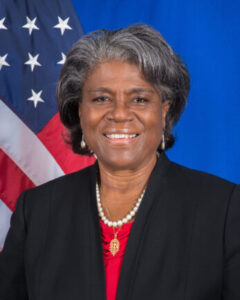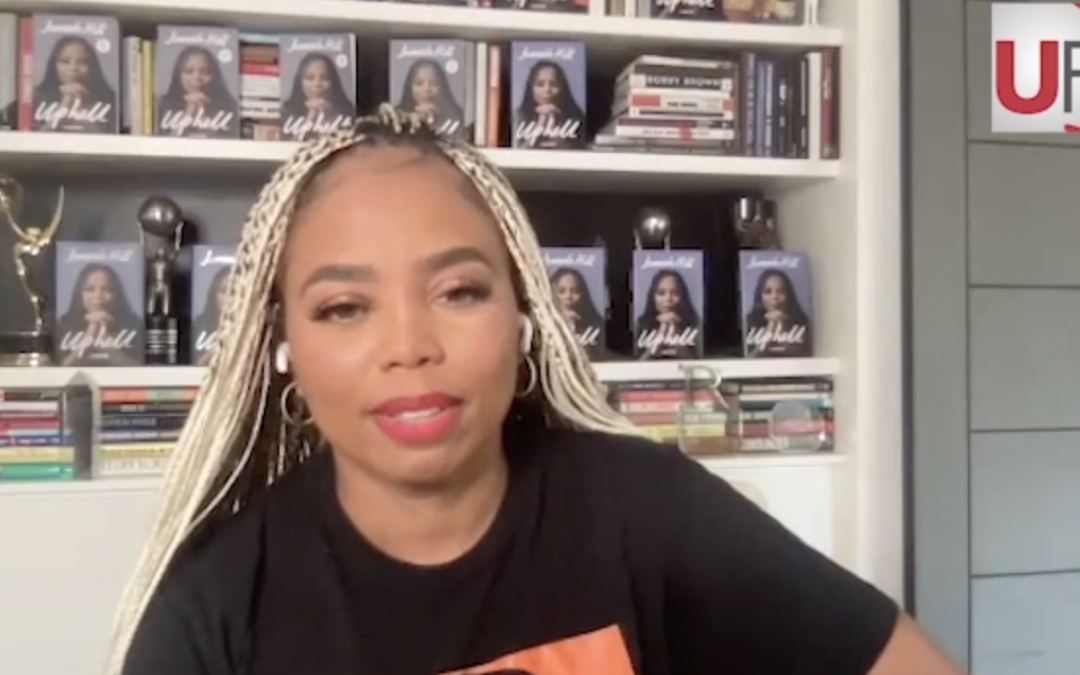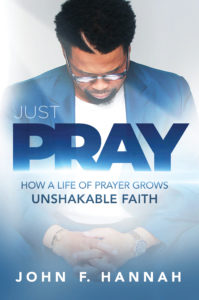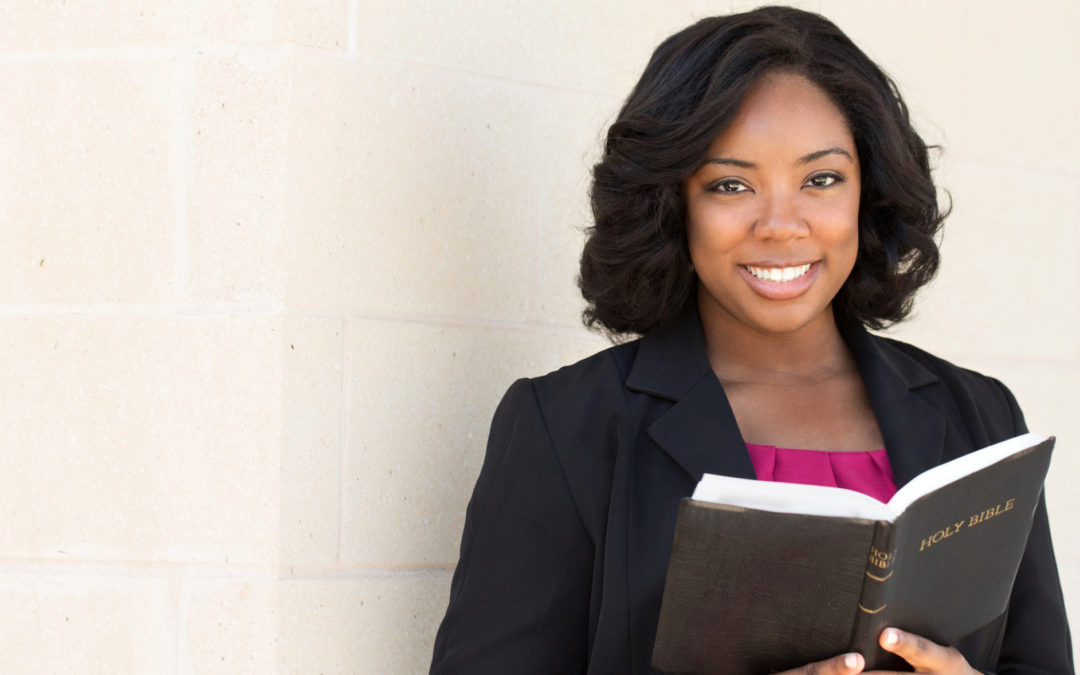by Maina Mwaura, Urban Faith Contributing Writer | Aug 25, 2023 | Commentary, Faith & Work, Headline News |
 As I’msitting in my little home office, it can be a challenge to understand that the world is much bigger than where I live in Kennesaw, Georgia. Or even the country that I’m proud to call home America, the same country that my father Moses Mwaura migrated to. Yet God calls for us to not only recognize that we’re part of a world representing over seven billion people, but at the same time to love the world. In fact, I would even venture to say that Isaiah 37:16 makes it clear that God made and sees the entire world, which is unlike me. God doesn’t see just one part of the world which is why as Christ Followers we should be praying for our world daily.
As I’msitting in my little home office, it can be a challenge to understand that the world is much bigger than where I live in Kennesaw, Georgia. Or even the country that I’m proud to call home America, the same country that my father Moses Mwaura migrated to. Yet God calls for us to not only recognize that we’re part of a world representing over seven billion people, but at the same time to love the world. In fact, I would even venture to say that Isaiah 37:16 makes it clear that God made and sees the entire world, which is unlike me. God doesn’t see just one part of the world which is why as Christ Followers we should be praying for our world daily.
 Recently on a rare Thursday Evening when many people were done working for the day, I had the privilege of spending a few minutes with United States Ambassador to the United Nations, Linda Thomas Greenfield. During my amazing time with her I learned so much about our world and the reasons that we should see ourselves not only as citizens of America but worldwide citizens. We have been placed here by a God who made and oversees the world. He desires for us to do our part, which in part is praying for the world around us.
Recently on a rare Thursday Evening when many people were done working for the day, I had the privilege of spending a few minutes with United States Ambassador to the United Nations, Linda Thomas Greenfield. During my amazing time with her I learned so much about our world and the reasons that we should see ourselves not only as citizens of America but worldwide citizens. We have been placed here by a God who made and oversees the world. He desires for us to do our part, which in part is praying for the world around us.
During my time with Ambassador Greenfield, she stressed that although she loves the world that the one part of the world that she is concerned about is Haiti. As a man who has lived in Florida, I understand her sentiments. Haiti is one of the poorest countries in the world and the rate of famine that is plaguing that part of the world is alarming. Although the Haitian people are a resourceful and steadfast people they have been through a lot. “Every two to three years, a national disaster seems to hit Haiti which makes it hard for them to bounce back,” according to Ambassador Greenfield. I can still remember that two years ago their President was assassinated while he slept, and it sent the country into turmoil. As citizens of the world, if we’re to make a difference we should listen to the prompting of the spirit. We should find our part of the world that God may want us to get involved with, pray for it, and even go if we can. If we are to do our part in loving the world we must get out of our personal boxes and get involved.

“We prevented famine in Africa by providing $500 million dollars to confront famine.” In hearing Ambassador Greenfield say this, it brought tears to my eyes. I think at times in our world we can get consumed in thinking that our tax dollars aren’t at work. But they are in cases like these. Luke 4:23 is clear that to much is given much is required. Although we have our problems in America, we have been given a lot. Which is why we should be missional as believers. The Great Commission is clear that we have been called to go into all the world which has never been easier than it is today with modern technology. In the world that we live in today, with just a click of a button, we can have conversations with people that our ancestors would have never dreamed of having. Just by having a conversation with someone in another part of the world we could be making the connection of a lifetime and maybe even bringing peace. I believe that great connections always bring peace. “The United Nations has prevented World Wars and is the only institution that we have worldwide.” This may explain why Ambassador Greenfield loves her job and seemed to be upbeat even after most of us have stopped working for the day. “I’m on a mission”, which for ambassador Greenfield began growing up in a small southern town in Louisiana. During our conversation she was on her way to the airport heading home from a trip to New Orleans. “I loved being back in my home state and the hospitality that they show me…I hope I’m making them proud.”
 As citizens of the world my prayer is that when people see us as American Citizens and followers of Jesus, that we are making them proud. We have been given a mandate by God to not only go into all the world, but also tackle issues that the world may be ignoring like climate change. The Ambassador is clear that climate change issues are not only affecting the us globally but also right here in America. To truly see the needs that are around us, we must people that love and recognize the needs around us. The United Nations is in New York City and is known as “The People’s House.” Ambassador Greenfield says, “It’s the peoples house, so anybody can come”. I will be taking her up on that offer because I believe that we are not only called to love our world, but we are also called to participate and engage with the world as world citizens. God doesn’t just love America, but He loves the entire world and there is so much work to be done. It is going to take all of us to pull off the task that He has called for us to do: bringing heaven to earth so that all may experience the kingdom of God.
As citizens of the world my prayer is that when people see us as American Citizens and followers of Jesus, that we are making them proud. We have been given a mandate by God to not only go into all the world, but also tackle issues that the world may be ignoring like climate change. The Ambassador is clear that climate change issues are not only affecting the us globally but also right here in America. To truly see the needs that are around us, we must people that love and recognize the needs around us. The United Nations is in New York City and is known as “The People’s House.” Ambassador Greenfield says, “It’s the peoples house, so anybody can come”. I will be taking her up on that offer because I believe that we are not only called to love our world, but we are also called to participate and engage with the world as world citizens. God doesn’t just love America, but He loves the entire world and there is so much work to be done. It is going to take all of us to pull off the task that He has called for us to do: bringing heaven to earth so that all may experience the kingdom of God.
by Mwikali Munyao | Aug 14, 2023 | Headline News |
Matthew 8:23-27 KJV
23 And when he was entered into a ship, his disciples followed him.
24 And, behold, there arose a great tempest in the sea, insomuch that the ship was covered with the waves: but he was asleep.
25 And his disciples came to him, and awoke him, saying, Lord, save us: we perish.
26 And he saith unto them, Why are ye fearful, O ye of little faith? Then he arose, and rebuked the winds and the sea; and there was a great calm.
27 But the men marvelled, saying, What manner of man is this, that even the winds and the sea obey him!
This scripture really ministers to me. Before you judge the disciples for running to Jesus in a panic and waking Him up from His sweet nap, may I say that if we truly were honest with ourselves, many of us have been in similar situations.
Have you ever felt as though God was on a yacht drinking His favorite smoothie and enjoying Himself when you are clutching onto the boat with all of your strength because of the storm that is rocking the boat? Have you ever questioned God when you wondered why each time you set sail in faith on what He showed you, all of a sudden the waters of your life turn to angry waves?
If your life has been a smooth sail and you wake up every day with everything laid out and nothing to worry about then we praise God for you! But this inspiration today is for that person who cannot make sense of what is going on.
You gave your life to God and now everything seems chaotic. You have been praying like never before, reading your word, going to church, sending tweets and memes on how good God is, but the more you do, the more you feel as though you are shaking and everything around you is rocking.
Take courage and let your faith be empowered today by the following:
1. You cannot sink in a ship that Jesus is sailing
The disciples followed Jesus onto the ship. He is the Shepherd and He knows everything. The situations you are dealing with have not come to drown you but to teach you how to swim and navigate through life. Don’t worry, you will not sink.
2. While you are pacing around and worrying, Jesus is chilling
The disciples were looking at the storm and wondering why would Jesus be asleep? You have been asking yourself “where is God?” but the reality is Jesus is there. He is resting and waiting to see what your reaction will be. If God is not stressed out, why are you stressed out? This is a perspective issue. How are you viewing your situation? Shift and think like your God. If He is not worried, neither should you.
3. If you cry out to God He will answer.
The disciples saw the waves and water getting in the boat and went to wake up Jesus. A lot of times we think that the disciples were weak for waking up Jesus and acting scared, but the reality is we scream and call on Jesus all the time, because we do not know what to do with the storms we are facing. Guess what, it is okay!
Sometimes crying out to Jesus for help shows us His authority. Jesus woke up and calmed the storm. Even though He rebuked the disciples for their lack of faith, the reality is the boat stopped rocking. People may wonder why you cry out to God so much or why you seek God so much and yes God may give you a rebuke here and there but He will answer you and calm your storms. Don’t stop calling on Him, Jesus will pay attention to your situation.
Be encouraged this month, and strive to wake up Jesus in every situation if you have to. Better to call on Jesus even if the boat is rocking, than to wonder if Jesus is even in the boat of your life during a storm!
Dear God,
Thank you for encouraging me that each time I follow You, You will walk me into a ship that will begin sailing to my destiny. In that journey, there will be storms, and I may be afraid, but remind me that You are on my boat, and I can call on You. I can come to You to wake You up, and You will ease my fears, and calm the storm. I am honored to serve a God who hears and answers my cry of help…
Blessed be Your name…
Amen.
by Mwikali Munyao | Jul 31, 2023 | Headline News |
Video Courtesy of LeahsEssence
We have been privileged to live in a generation that has mastered the art of multitasking, being able to do multiple things at the same time and excelling. You really have to, otherwise, life will pass you by.
Sometimes the news changes so fast that if you wait too long, you are outdated. Have you ever been in a situation where you did not check your phone all day, and by the time you turned it on, it seemed as though you were on a different planet because so much had happened? That is the gift of living in a world of possibilities. Everything is possible and anything can happen. The sky is the limit.
Limitation presents itself in a very cunning way in our lives. For some, it begins at a young age through criticism from a parent or guardian, a teacher or peers that begin to conform your mind to think a certain way.
Or, it could be the environment that you are first exposed to. Unfortunately, depending on the zip code that you reside in, it can determine the kind of privileges that are afforded to you.
Limitation can enter your life through rejection, a lack of acceptance, where you never fit in and regardless of how kind you try to be, or all the things you try to do, you just never measure up. Therefore, you feel limited, constrained, suffocated and blocked.
Limitation could be geographical. The opportunities that could bring a breakthrough in your life may not be at the proximity of where you are currently located. Moving out of that geographical region would be coming out of that box of limitation and pursuing something that could change your life.
The mistakes that we make are stepping into these boxes of limitation that are presented to us daily in our lives and getting comfortable. We take our pity party pillow, and our “poor old me” throws, find a nice corner to hibernate, and hope that Jesus will come down and rescue us from our misery.
I love the Bible because it is a wonderful and precious book filled with verbs. God is all about movement, action, and purpose.
In the book of Genesis, our first encounter with God, is His interaction with an earth that was void and filled with darkness. That did not intimidate Him or make Him cower back. Instead, His Spirit “moved” upon the face of the waters.
Genesis 1:2 KJV
2 And the earth was without form, and void; and darkness was upon the face of the deep. And the Spirit of God moved upon the face of the waters.
Your life may be filled with void and darkness, but guess what God wants you to do? MOVE!
I created an acronym for the word MOVE to push me during those times that I sense limitation is looming over me, trying to push me down a dungeon of hopelessness.
M– Mastering
O– Of
V– Victory
E– Everyday
Sometimes you have to look at life as a classroom that you show up to master and excel in every lesson presented. By the time we get to verse 31 in Genesis 1, God had taken the earth that was void and made it to be very good. You have to take your void situation, be motivated by purpose and create the environment that makes it very good.
Genesis 1:31 KJV
31 And God saw everything that He had made, and, behold, it was very good. And the evening and the morning were the sixth day.
Instead of throwing a glamorous pity party and sending out beautiful invitations to host limitation in your life, I suggest:
1. Returning the limitation box back to the sender
Just the way you return mail that is not yours, you do not have to receive projections of limitations that are said to you, thrown at you, or even perceived by you from others. You have the power to control what you receive. Learn how to reject that which will limit your progress. Let it “talk to the hand!”
2. Follow God’s role model
The first thing that God did was move. He was not concerned about how things looked, He got busy creating. He got busy with purpose. Instead of complaining about what is wrong and how unfair life may be (which may be true), get busy moving into purpose and finding out why you are here. Passivity is a hobby that many take up, waiting for a change that may never come. You are the agent that triggers the change you are praying for.
3. Believe in yourself
There comes a point of decision and reckoning that you are unique. You have to begin investing in self-affirmation ministry to yourself and build up the confidence muscles that may be feeble in you. You may have to cry sometimes and that is okay, but after crying let there be purpose in your tears. The greatest gift that you can give yourself is to refuse to be limited and live a life that is open to receive all that God has for you.
Dear God,
Help me with the daily struggle of limitation that overwhelms me. If I have limited myself and allowed sabotage in my life, or refuse to step on the platforms that You bring to me, forgive me. I give myself permission to succeed. I look to You for confidence, and I receive the boldness to walk into purpose and the liberty of being myself. That is a gift, a precious gift that I ask You to help me guard. The gift of being me. Thank You God for making me, me.
Amen.

by Maina Mwaura, Urban Faith Contributing Writer | Jul 26, 2023 | Commentary, Headline News, Social Justice |
Jemele Hill became known as a popular journalist in sports, but she is now one of the clearest voices in the country for social justice. She is a woman of faith and at the same time a fierce critic who asks questions and fights for the marginalized.
UrbanFaith contributor Maina Mwaura sat down with Jemele Hill to talk about her new memoir Uphill where she tells her own story with the depth and clarity she has used to tell other people’s stories for decades. The full interview is above, more about the book is below.
Jemele Hill’s world came crashing down when she called President Trump a “white supremacist”; the White House wanted her fired from ESPN, and she was deluged with death threats. But Hill had faced tougher adversaries growing up in Detroit than a tweeting president. Beneath the exterior of one of the most recognizable journalists in America was a need—a calling—to break her family’s cycle of intergenerational trauma.
Born in the middle of a lively routine Friday night Monopoly game to a teen mother and a heroin-addicted father, Hill constantly adjusted to the harsh realities of not only her own childhood but the inherited generational pain of her mother and grandmother. Her escape was writing.
Hill’s mother was less than impressed with the brassy and bold free expression of her diary, but Hill never stopped discovering and amplifying her voice. Through hard work and a constant willingness to learn, Hill rose from newspaper reporter to columnist to new heights as the coanchor for ESPN’s revered SportsCenter. Soon, she earned respect and support for her fearless opinions and unshakable confidence, as well as a reputation as a trusted journalist who speaks her mind with truth and conviction.
In Jemele Hill’s journey Uphill, she shares the whole story of her work, the women of her family, and her complicated relationship with God in an unapologetic, character-rich, and eloquent memoir

by Allen Reynolds, UrbanFaith Editor | Jul 20, 2023 | Commentary, Headline News, Prayers & Devotionals |
Have you ever looked at your life and wondered how your needs would be met this week? Have you been in need of advice and not known where to turn? Have you ever wondered what your purpose is? How can you grow in your relationship with God?
The answer to all these questions is prayer. Many of us want to pray, but struggle to figure out how to pray which is the reason why Pastor John Hannah wrote his book: Just Pray: How a Life of Prayer Grows Unshakeable Faith which is now available everywhere and can be found here. UrbanFaith interviewed Pastor John Hannah about his new book Just Pray: How A Life Of Prayer Grows Unshakeable Faith. The full interview is linked above.
Prayer is a foundational part of every Christian’s life, it is literally the way we communicate with God. As we desire to grow in our relationship with God, we must learn how to pray in ways that are powerful and practical. Pastor Hannah leads prayer calls weekly with thousands of people, has spoken and taught on the subject of prayer for decades, and has decided to share his insights on why and how we can grow in our prayer life as foundational to a life of faith through this book.

About Pastor John Hannah
John F. Hannah is the founder and lead pastor of New Life Covenant Church Southeast. A speaker and author, he has impacted thousands of lives through his ministry and dedication to serve. Through his focused desire to teach people how to grow their relationship with God, Pastor Hannah has become renowned for his commitment to prayer. Because of his heart for people, Hannah has traveled the globe speaking in regions of Jiji, Australia, and South Africa and even shared multiple media and conference platforms with acclaimed faith-based leaders Bishop T.D. Jakes and Steve Harvey. He has been married to Anna Hannah for over twenty-five years.

by Alan Marshall II | Jul 17, 2023 | Faith & Work, Headline News |

Tip #1: Break Out of Your Box
Understand that God uniquely designed you. Everything about you was created to appeal to the people, place, and position that God destined for your life. Breaking out of your box is an act of surrender that allows God the opportunity to move on your behalf. If you’re seeking help discovering your destiny, reflect on these scriptures: Isaiah 43:19, Psalms 139:14, and Jeremiah 29:11.
Tip #2 Trust God
This tip could not be overstated. Many in ministry are joining the “Great Resignation” for various reasons, forcing them to step out on faith into vocations outside their typical comfort zone. When I was called to consult for a land development opportunity, I wanted to decline the offer. After prayer and agreement from my wife, I accepted. Turning down the chance to lead a development worth millions could have caused me to head in the opposite direction from God’s calling for my life. If you’re desiring to trust God in this season, reflect on these scriptures: Proverbs 3:5-6, Psalms 46:10, and Matthew 6:25.
Tip #3 Be Strategic
Strategy is time-consuming, tiring, and sometimes frustrating, but it’s what makes and breaks organizations and sets the successful apart. The planning, implementation, and execution of an idea puts your faith into action. As you balance strategy and trust, reflect on these scriptures: Habakkuk 2:2-3, James 2:14-26, and Proverbs 16:1-3.
For Christians, walking in the will of God is critically important. Understanding how your uniqueness in Christ relates to the world provides the opportunity to thrive and spread the Good News in the unreached parts of society. Even those skilled in ministry can find themselves venturing into opportunities to be influential in the business sector. I believe that God is calling many Christians to break out of the box and pursue ministry in the marketplace, trust Him by taking opportunities to work in secular settings, and strategize for success. Isaiah 43:19 “Behold, I am doing a new thing; now it springs forth, do you not perceive it? I will make a way in the wilderness and rivers in the desert.”
 As I’msitting in my little home office, it can be a challenge to understand that the world is much bigger than where I live in Kennesaw, Georgia. Or even the country that I’m proud to call home America, the same country that my father Moses Mwaura migrated to. Yet God calls for us to not only recognize that we’re part of a world representing over seven billion people, but at the same time to love the world. In fact, I would even venture to say that Isaiah 37:16 makes it clear that God made and sees the entire world, which is unlike me. God doesn’t see just one part of the world which is why as Christ Followers we should be praying for our world daily.
As I’msitting in my little home office, it can be a challenge to understand that the world is much bigger than where I live in Kennesaw, Georgia. Or even the country that I’m proud to call home America, the same country that my father Moses Mwaura migrated to. Yet God calls for us to not only recognize that we’re part of a world representing over seven billion people, but at the same time to love the world. In fact, I would even venture to say that Isaiah 37:16 makes it clear that God made and sees the entire world, which is unlike me. God doesn’t see just one part of the world which is why as Christ Followers we should be praying for our world daily. Recently on a rare Thursday Evening when many people were done working for the day, I had the privilege of spending a few minutes with United States Ambassador to the United Nations, Linda Thomas Greenfield. During my amazing time with her I learned so much about our world and the reasons that we should see ourselves not only as citizens of America but worldwide citizens. We have been placed here by a God who made and oversees the world. He desires for us to do our part, which in part is praying for the world around us.
Recently on a rare Thursday Evening when many people were done working for the day, I had the privilege of spending a few minutes with United States Ambassador to the United Nations, Linda Thomas Greenfield. During my amazing time with her I learned so much about our world and the reasons that we should see ourselves not only as citizens of America but worldwide citizens. We have been placed here by a God who made and oversees the world. He desires for us to do our part, which in part is praying for the world around us.
 As citizens of the world my prayer is that when people see us as American Citizens and followers of Jesus, that we are making them proud. We have been given a mandate by God to not only go into all the world, but also tackle issues that the world may be ignoring like climate change. The Ambassador is clear that climate change issues are not only affecting the us globally but also right here in America. To truly see the needs that are around us, we must people that love and recognize the needs around us. The United Nations is in New York City and is known as “The People’s House.” Ambassador Greenfield says, “It’s the peoples house, so anybody can come”. I will be taking her up on that offer because I believe that we are not only called to love our world, but we are also called to participate and engage with the world as world citizens. God doesn’t just love America, but He loves the entire world and there is so much work to be done. It is going to take all of us to pull off the task that He has called for us to do: bringing heaven to earth so that all may experience the kingdom of God.
As citizens of the world my prayer is that when people see us as American Citizens and followers of Jesus, that we are making them proud. We have been given a mandate by God to not only go into all the world, but also tackle issues that the world may be ignoring like climate change. The Ambassador is clear that climate change issues are not only affecting the us globally but also right here in America. To truly see the needs that are around us, we must people that love and recognize the needs around us. The United Nations is in New York City and is known as “The People’s House.” Ambassador Greenfield says, “It’s the peoples house, so anybody can come”. I will be taking her up on that offer because I believe that we are not only called to love our world, but we are also called to participate and engage with the world as world citizens. God doesn’t just love America, but He loves the entire world and there is so much work to be done. It is going to take all of us to pull off the task that He has called for us to do: bringing heaven to earth so that all may experience the kingdom of God.




